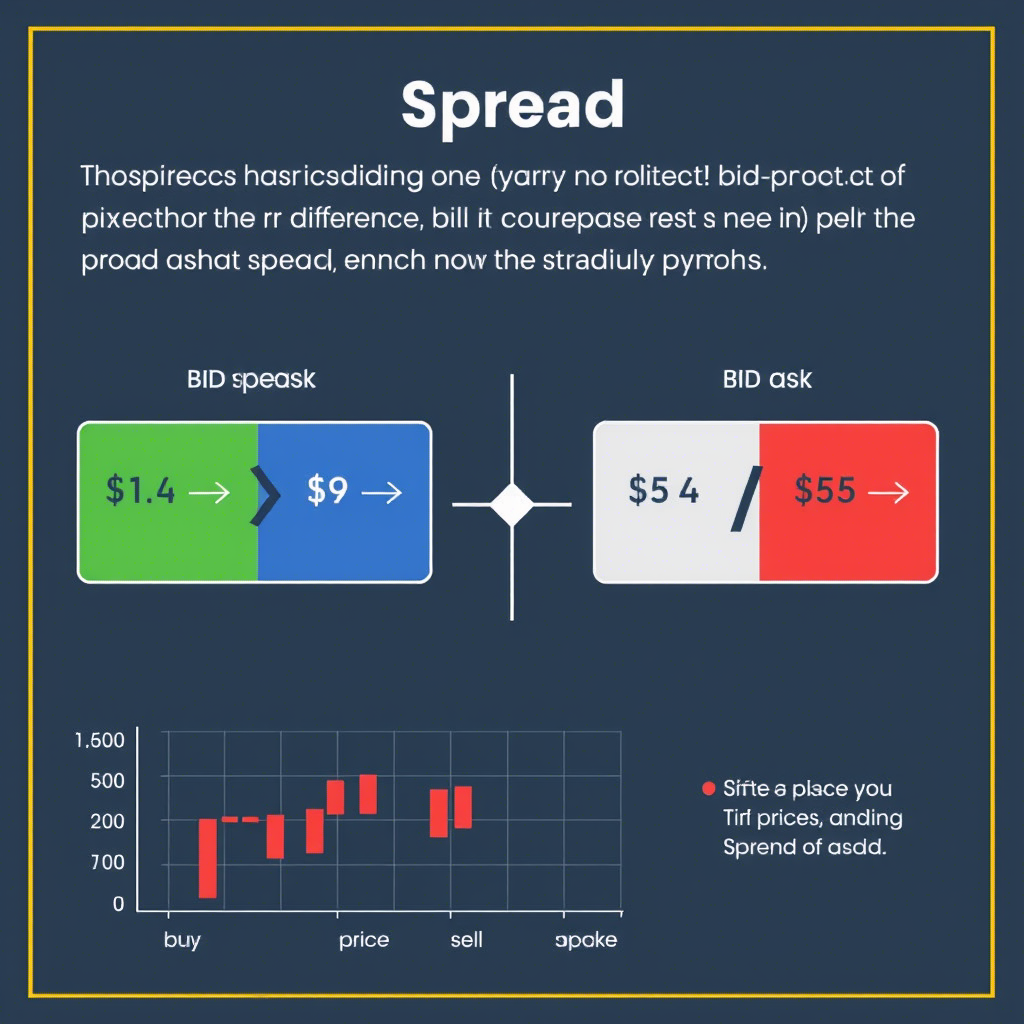Understanding Spread in Currency Trading: A Beginner’s Guide

Introduction to Spread
In currency trading, the spread is a fundamental concept that represents the cost of executing a trade in the Forex market. The spread is the difference between the bid price (the price at which you can sell a currency) and the ask price (the price at which you can buy a currency). Measured in pips, the spread is a key factor affecting profitability in currency trading, as it directly influences trading costs. This guide provides a comprehensive understanding of the spread, its mechanics, types, factors affecting it, and strategies to manage it effectively in currency trading.
What is Spread in Currency Trading?
The spread in currency trading is the gap between the bid and ask prices of a currency pair, quoted by a broker. For example:
- In the EUR/USD pair, if the bid price is 1.1000 and the ask price is 1.1002, the spread is 2 pips.
- Traders pay this spread when entering a trade, as they buy at the higher ask price and sell at the lower bid price.
The spread acts as the broker’s fee for facilitating trades in currency trading, especially for market maker brokers who don’t charge a separate commission.
How Spread Works
When you open a trade in currency trading, the spread is the initial cost you incur. For instance:
- Buying EUR/USD at an ask price of 1.1002 and selling at a bid price of 1.1000 means you start the trade with a 2-pip loss due to the spread.
- To profit, the market must move in your favor by at least the spread amount.
The spread can significantly impact high-frequency strategies like scalping, where traders execute multiple trades daily in currency trading.
Types of Spreads
There are two main types of spreads in currency trading:
- Fixed Spreads: Remain constant regardless of market conditions. They are common with market maker brokers and provide predictability in currency trading costs.
- Variable (Floating) Spreads: Fluctuate based on market liquidity and volatility. They are tighter during high liquidity but widen during news events or low trading volumes.
Factors Affecting Spread
Several factors influence the spread in currency trading:
- Market Liquidity: Major pairs like EUR/USD have tighter spreads due to high trading volume, while exotic pairs (e.g., USD/TRY) have wider spreads.
- Volatility: Economic events, such as central bank announcements, can widen spreads in currency trading.
- Broker Model: Market makers offer fixed spreads, while ECN brokers provide variable spreads with direct market access.
- Trading Session: Spreads are tighter during overlapping sessions (e.g., London/New York) and wider during quieter sessions (e.g., Asian session).
- Account Type: Premium accounts may offer lower spreads compared to standard accounts.
Impact of Spread on Currency Trading
The spread directly affects profitability in currency trading:
- High-Frequency Trading: Scalpers, who trade frequently, prefer low spreads to minimize costs.
- Long-Term Trading: Swing or position traders are less affected by spreads, as they hold trades longer, allowing larger price movements to offset costs.
- Cost Accumulation: Frequent trading with wide spreads can erode profits over time in currency trading.
For example, trading a pair with a 3-pip spread 10 times a day adds up to 30 pips in costs, which can be significant for small accounts.
Benefits of Understanding Spread
- Cost Management: Knowing the spread helps traders choose cost-effective pairs and brokers for currency trading.
- Strategy Optimization: Low spreads benefit scalping, while wider spreads may suit longer-term strategies.
- Broker Selection: Comparing spreads across brokers ensures better trading conditions.
- Market Timing: Trading during high-liquidity sessions reduces spread costs in currency trading.
Risks of Spread in Currency Trading
- Increased Costs: Wide spreads during volatile periods can raise trading costs.
- Unexpected Widening: Sudden market events may cause spreads to spike, impacting trade outcomes.
- Broker Manipulation: Some unregulated brokers may artificially widen spreads to increase profits.
- Profit Erosion: High spreads can make it harder to achieve profitability in currency trading, especially for beginners.
Managing Spread in Currency Trading
To minimize the impact of spreads in currency trading:
- Choose Low-Spread Pairs: Trade major pairs like EUR/USD or USD/JPY, which typically have tighter spreads.
- Trade During Peak Hours: Focus on high-liquidity sessions (e.g., 8 AM–12 PM EST) when spreads are narrower.
- Select a Reputable Broker: Opt for brokers with competitive spreads and transparent pricing.
- Use Limit Orders: Enter trades at specific prices to avoid paying wider spreads during volatility.
- Monitor Economic Events: Avoid trading during major news releases when spreads often widen.
Spread and Trading Strategies
The spread influences strategy choice in currency trading:
- Scalping: Requires low spreads (e.g., 0.5–1 pip) to maximize profits from small price moves.
- Day Trading: Benefits from moderate spreads, as trades are held for hours.
- Swing Trading: Less sensitive to spreads, as larger price targets offset costs.
- Carry Trading: Focuses on interest rate differentials, so spreads are a secondary concern.
Regulatory Considerations
Regulations impact spreads in currency trading indirectly:
- In the EU, ESMA regulations ensure transparent spread pricing by regulated brokers.
- In the US, CFTC oversight promotes fair pricing practices.
- Unregulated brokers may offer low spreads but pose risks like hidden fees or manipulation.
Always choose a regulated broker to ensure fair spreads in currency trading.
Practical Tips for Handling Spread
- Compare Brokers: Research spreads offered by different brokers for your preferred pairs.
- Use Demo Accounts: Practice currency trading to understand how spreads affect outcomes.
- Track Spread Costs: Calculate the impact of spreads on your trading strategy.
- Avoid Low-Liquidity Pairs: Exotic pairs have higher spreads, increasing costs.
- Stay Informed: Use economic calendars to anticipate events that widen spreads in currency trading.
Common Mistakes to Avoid
- Ignoring Spread Costs: Failing to account for spreads can erode profits.
- Trading During Volatility: High spreads during news events increase costs.
- Choosing Unregulated Brokers: Risky brokers may manipulate spreads in currency trading.
- Over-Trading: Frequent trades with high spreads reduce profitability.
Spread in Practice
Consider trading EUR/USD with a 1.5-pip spread:
- A $10,000 position (0.1 lot) incurs a $1.50 cost per trade (1.5 pips × $1/pip).
- 20 trades daily equal $30 in spread costs, significant for small accounts in currency trading.
By switching to a broker with a 0.5-pip spread, the cost drops to $10 daily, highlighting the importance of low spreads.
Conclusion
Understanding the spread is essential for success in currency trading, as it directly impacts trading costs and profitability. By choosing low-spread pairs, trading during high-liquidity sessions, and selecting regulated brokers with transparent pricing, traders can minimize spread costs. Whether scalping or swing trading, factoring the spread into your strategy ensures better decision-making in currency trading. Start with a demo account, monitor market conditions, and prioritize cost-effective trading to thrive in the Forex market.




